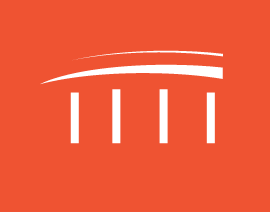
It is too late to apply under the CARES Act Paycheck Protection Program, but another chance to borrow has been rolled out under new legislation.
Learn More About PPP Second DrawOn March 27, 2020, President Trump signed into law the Coronavirus Aid, Relief, and Economic Security Act (the “CARES Act”), which was passed by the U.S. House of Representatives on the same day and by the U.S. Senate two days prior. Certain provisions of the CARES Act become effective retroactive to earlier dates, but most of the newly enacted laws under the CARES Act become effective on the date of enactment- March 27, 2020.
One of the provisions of the CARES Act is the Paycheck Protection Program (“PPP”), which provides certain business access to certain loans to pay certain expenses due to hardships faced by the COVID-19 outbreak and related disruptions. One of the key parts of this legislation is the potential for forgiveness of the PPP loan. For a more detailed summary of the entire program, please see our earlier discussion “Everything Your Business Needs to Known about These First Come, First Served Forgivable Loans.”
One of the provisions in the CARES Act says, “During the covered period, individuals who operate under a sole proprietorship or as an independent contractor and eligible self-employed individuals shall be eligible to receive a covered loan.” On April 14, 2020, the Small Business Administration (“SBA”) and U.S. Treasury Department finally released an Interim Final Rule regarding sole proprietors, independent contractors, and eligible self-employed individuals (the “April 14 Rule”).
What is an “eligible self-employed individual?”
An “eligible self-employed individual” is an individual who:
- Regularly carries on any trade or business within the meaning of Section 1402 of the Internal Revenue Code (the “Code”), and
- would be entitled to receive paid leave during the taxable year under the Emergency Paid Sick Leave Act (part of the Families First Coronavirus Response Act (FFCRA) enacted on March 18, 2020) if the individual were an employee of an employer (other than himself or herself).
- Section 1402 of the Code covers net earnings from self-employment and refers to Section 162 of the Code for purposes of defining “trade or business”.
- But Section 162 of the Code does not define “trade or business.” It is generally determined on a case by case basis under common law.
- The U.S. Supreme Court has defined “trade or business” for purposes of Section 162 of the Code, generally, as any activity conducted with “continuity and regularity” and with the primary purpose of earning income or making profit.
- Sole proprietors and independent contractors typically have net earnings from self-employment so the term “eligible self-employed individual” already includes sole proprietors and independent contractors. Therefore, sole proprietors, independent contractors, and eligible self-employed individuals will be referred to in the remainder of this summary collectively as “self-employed individuals.”
What are the eligibility requirements for a PPP loan?
Most of the April 14 Rule covers “Individuals with Self-Employment Income who File a Form 1040, Schedule C.”
A self-employed individual who files a Form 1040 Schedule C is eligible for a PPP loan if such individual:
- Was in operation on February 15, 2020;
- Is an individual with self-employment income (such as an independent contractor or sole proprietor);
- Has a principal place of residence is in the United States; and
- Has filed or will file a Form 1040 Schedule C for 2019.
What about self-employed individuals who were not in business in 2019?
The April 14 Rule says that the SBA will issue additional guidance for those individuals with self-employment income who were not in operation in 2019 but who were in operation on February 15, 2020 and will file a Form 1040 Schedule C for 2020.
How do self-employed individuals calculate their maximum loan amount?
The maximum loan amount depends upon whether the self-employed individual has other employees.
If the self-employed individual has no employees, the maximum loan amount is calculated as follows:
- Determine the self-employed individual’s 2019 Form 1040 Schedule C net profit amount (line 31 of Schedule C).
- If the self-employed individual has not yet filed a 2019 tax return, he or she should still fill out Schedule C and compute the value.
- If the line 31 net profit amount is over $100,000, it must be reduced to $100,000. If the line 31 net profit amount is zero or less, the self-employed individual is not eligible for a PPP loan.
- Divide the net profit amount by 12, and then multiply that number by 2.5.
- Add the outstanding balance of any Economic Injury Disaster Loan (EIDL) obtained between January 31, 2020 and April 3, 2020 that the self-employed individual seeks to refinance.
- Subtract any amount advanced under an EIDL COVID-19 loan (because, under the CARES Act, such advance already does not need to be repaid)
If the self-employed individual does have employees, the maximum loan amount is calculated as follows:
Compute 2019 payroll:
- Determine the self-employed individual’s Schedule C line 31 net profit amount.
- The same rules described above regarding the $100,000 limit and ineligibility if the net profit is zero or less apply.
- Add 2019 gross wages and tips paid to employees whose principal place of residence is in the United States (computed using 2019 IRS Form 941 Taxable Medicare wages & tips (line 5c- column 1) from each quarter).
- Add any pre-tax employee contributions for health insurance or other fringe benefits excluded from taxable Medicare wages and tips.
- Subtract any amounts paid to any employee in excess of $100,000, annualized.
- Subtract any amounts paid to any employee whose principal place of residence is outside the United States.
- Add 2019 employer health insurance contributions, retirement contributions, and state and local taxes assessed on employee compensation (generally, state unemployment tax).
- Divide this result by 12, and then multiply by 2.5.
- Add the outstanding balance of any EIDL loan obtained between January 31, 2020 and April 3, 2020 (if the self-employed individual wishes to refinance such loan).
- Subtract any EIDL advance received.
- Determine the self-employed individual’s Schedule C line 31 net profit amount.
Regardless of whether the self-employed individual has yet filed a 2019 tax return, the self-employed individual must provide the 2019 Form 1040 Schedule C with his or her PPP loan application to substantiate the applied-for PPP loan amount and a 2019 IRS Form 1099-MISC detailing nonemployee compensation received (box 7), invoice, bank statement, or book of record that establishes the individual is self-employed.
How can self-employed individuals use PPP loan funds?
A self-employed individual can use the loan proceeds to pay:
- Owner compensation replacement calculated based on 2019 net profit (described above).
- Employee payroll costs (if the self-employed individual has employees).
- Mortgage interest payments (but not mortgage prepayments or principal payments).
- Business rent.
- The April 14, 2020 Rule indicates that funds can be used to pay rent not only for real property but also for equipment- “(e.g., the warehouse where you store business equipment or the vehicle you use to perform your business)”
- Business utilities.
- Interest payments on any other debt obligations that were incurred before February 15, 2020.
Note, however, that the SBA and Treasury are limiting the use of PPP loan proceeds to those types of allowable uses for which the self-employed individual actually made expenditures in 2019.
- At least 75% of the PPP loan proceeds must be used for payroll costs.
What amounts are eligible for forgiveness?
- Payroll costs including salary, wages, and tips, up to $100,000 of annualized pay per employee (for eight weeks, a maximum of $15,385 per individual), as well as covered benefits for employees (but not owners), including health care expenses, retirement contributions, and state taxes imposed on employee payroll paid by the employer (such as unemployment insurance premiums).
- Owner compensation replacement, calculated based on 2019 net profit (described above), with forgiveness of such amounts limited to 8 weeks’ worth (8/52) of 2019 net profit, but excluding any qualified sick leave or family leave equivalent amount for which a credit is claimed under the FFCRA.
- Payments of interest on mortgage obligations on real or personal property incurred before February 15, 2020, to the extent they are deductible on Form 1040 Schedule C.
- Rent payments on lease agreements in force before February 15, 2020, to the extent they are deductible on Form 1040 Schedule C.
- Utility payments under service agreements dated before February 15, 2020 to the extent they are deductible on Form 1040 Schedule C.
Is there a limit on forgiveness?
Yes. Forgiveness of owner compensation replacement for self- employed individuals who file a Schedule C is limited to 8 weeks’ worth (8/52) of 2019 net profit. Total loan forgiveness is limited to a proportionate 8-week share of 2019 net profit, as reflected in the self-employed individual’s 2019 Form 1040 Schedule C.
What documentation needs to be submitted when requesting loan forgiveness?
If the self-employed individual has employees, he or she should submit Form 941 and state quarterly wage unemployment insurance tax reporting forms or equivalent payroll processor records that best correspond to the 8-week covered period (with evidence of any retirement and health insurance contributions).
Whether or not the self-employed individual has employees, he or she must submit evidence of business rent, business mortgage interest payments on real or personal property, or business utility payments during the 8-week covered period if loan proceeds were used for those purposes.
What about partners of partnerships?
Partners of partnerships are generally considered self-employed because they pay self-employment taxes and have “earnings form self-employment” under Section 1402 of the Code. However, the SBA and Treasury have decided that for PPP loan purposes, partners may not obtain PPP loans personally.
- Rather, the partner’s income is to be treated as a payroll cost of the partnership: “the self-employment income of general active partners may be reported as a payroll cost, up to $100,000 annualized, on a PPP loan application filed by or on behalf of the partnership.”
Beyond a little more explanation of the reasoning for the SBA’s and Treasury’s decision with respect to partners of partnerships, the April 14 Rule provides no further guidance for partners.
- The implication is that the remainder of the April 14 Rule does not apply to partners since partners are, presumably, to be treated as employees of the partnership-borrower for PPP purposes. This conclusion is supported by the April 14 Rule’s heavy reliance on Form 1040 Schedule C and the fact that a partner does not file Schedule C with his or her Form 1040, but rather includes a Schedule K-1.
- The April 14 Rule only explicitly states that partner income may be included for purposes of determining the maximum loan amount but is silent as to whether compensation to partners is a permissible and/or forgivable use of loan funds. But excluding such payments would be illogical if partnerships are otherwise allowed to borrow more based on partner income. Therefore, while not assured, it is safe to assume that payment of partner compensation from PPP loan funds is permissible and forgivable (up to $100,000, as prorated for the 8-week covered period).
What should self-employed do to prepare?
- Contact lenders. (Note that non-bank companies such as PayPal, Inuit, and Square have been authorized to make PPP loans.)
- If the 2019 Form 1040 has not been prepared yet, prepare at least Schedule C as quickly as possible.
- Gather as quickly as possible other payroll records, documentation of health insurance premiums paid, retirement plan funding records, and permissible expenses for calendar year 2019.
- Different lenders may ask for different records so do not rely on request lists made available from lenders other than your own.
If you are interested in learning more about PPP loans, SBA disaster loans, or any other part of the CARES Act or other newly enacted law, please contact your Carlile Patchen & Murphy LLP attorney with any questions.
Continued guidance on the PPP and other parts of the CARES Act will continue to be released from time to time and we will provide updates, as necessary once such guidance is released. This writing is intended to provide only a summary of the rules applicable to self-employed individuals, based on the information available as of the time of publication. Additional or new guidance released by the SBA or Treasury after the date of publication hereof may render parts of this writing no longer applicable or correct. This writing should not be deemed to be, or relied upon as, a comprehensive guide, an opinion on your qualification for a PPP loan, or an opinion that you should or should not pursue a PPP loan.





Do we have any information about whether there will be another round of PPP loans under the next stimulus bill? I work with a number of small businesses who are asking, so I’d love to get some insight if you have any!
In the most recent proposal, appears to have bipartisan support. Keep in mind, it is merely a proposal right now and a final bill (if any) may have differences, both minor and substantial.
You can find more information about the Bipartisan Emergency COVID Relief Act of 2020 framework summary here: https://www.cpmlaw.com/wp-content/uploads/2020/12/12920-emergency-covid-relief-act-of-2020-framework-summary.pdf
As we get closer to a more definite answer, our Business Law attorneys will write a summary helping you better serve your clients. Make sure you sign-up for our newsletters to get them directly to your inbox.